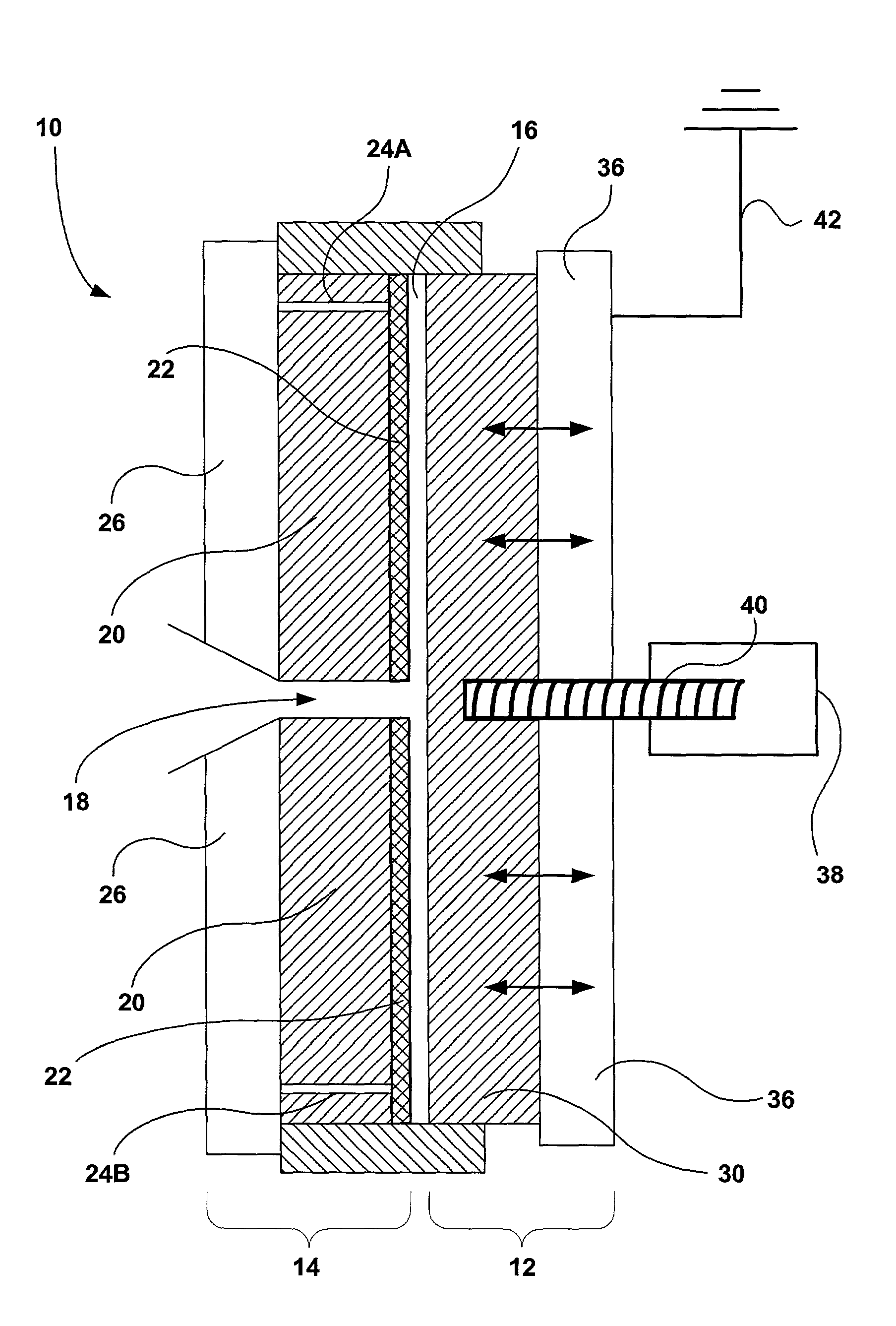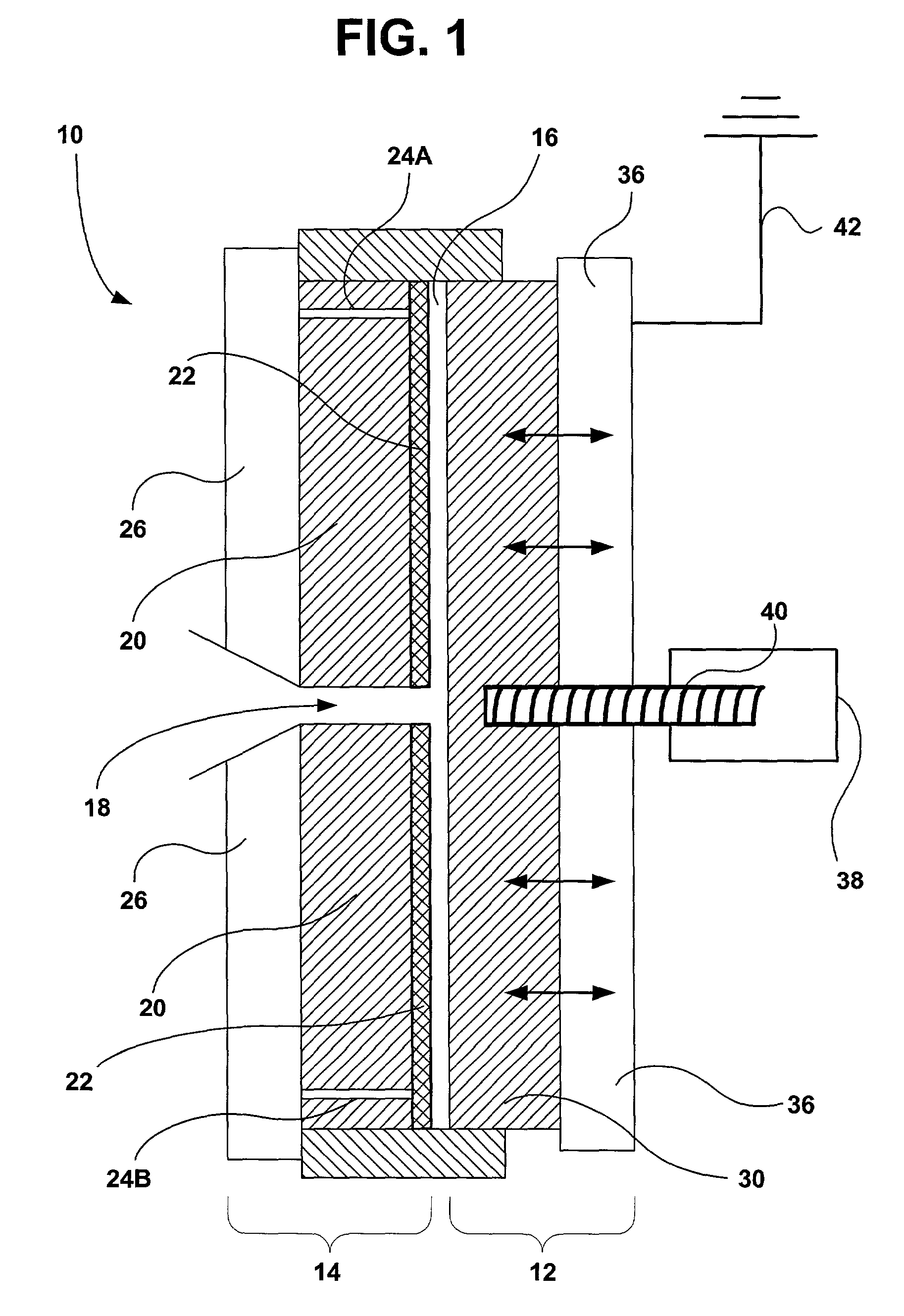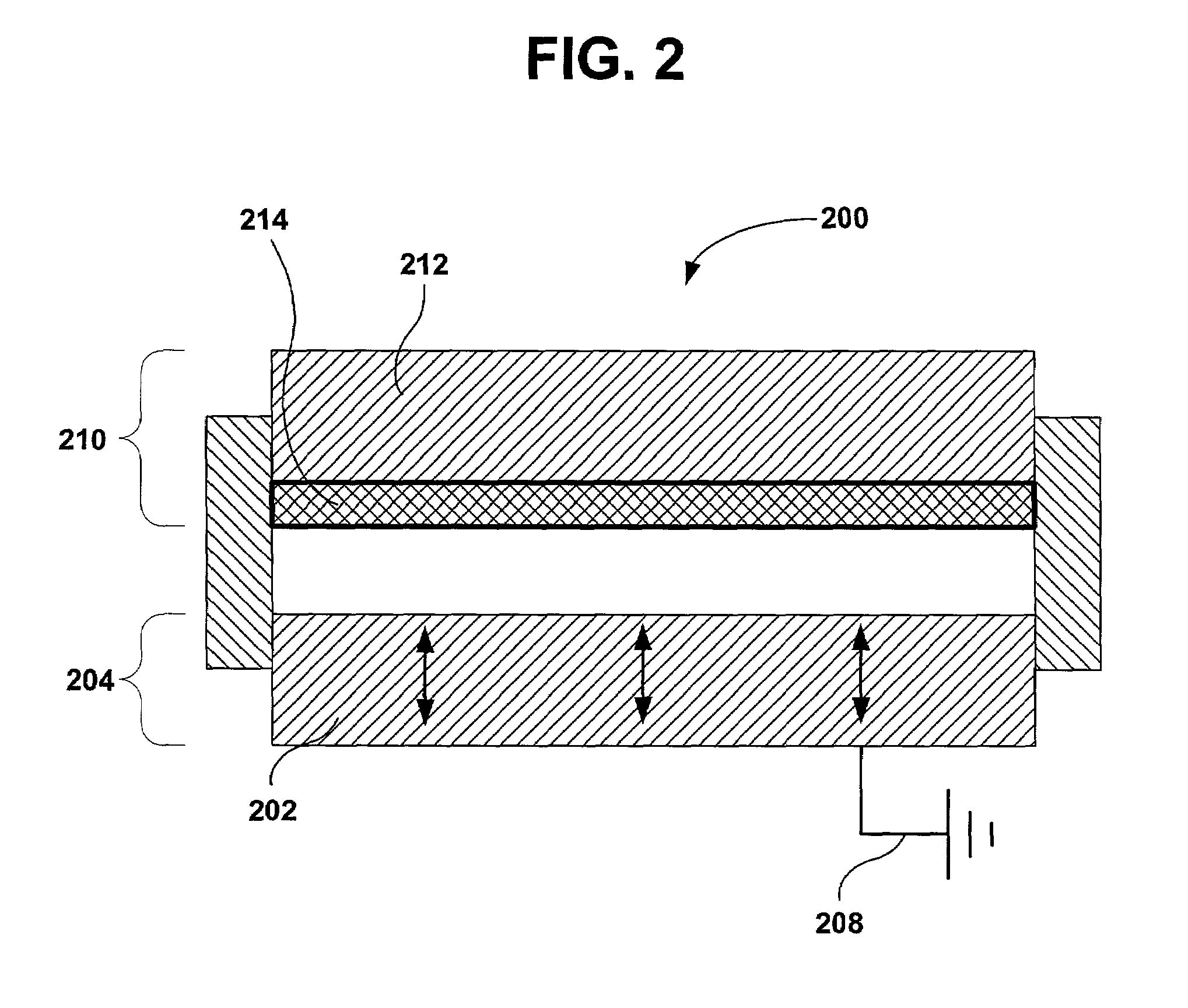Grounded molding tool for manufacture of optical components
a technology of optical components and molding tools, which is applied in the field of injection molding of optical components, can solve the problems of significant static electricity in the molten thermoplastic injection molding process, the relatively expensive mastering process, etc., and achieve the effects of improving grounding, reducing or eliminating and reducing the amount of charge passing
- Summary
- Abstract
- Description
- Claims
- Application Information
AI Technical Summary
Benefits of technology
Problems solved by technology
Method used
Image
Examples
example
[0028]Sumitomo CD-RW Molding System, model number SD 40, commercially available from Sumitomo Plastics-Machinery of Norcross, Ga. was used to mold optical data storage disks. A molding tool within the Sumitomo CD-RW Molding System operated in a manner similar to the description above with reference to FIG. 1. However the molding tool originally did not include the substantially non-resistive path to ground 42.
[0029]In that case, the life cycle of the mirror block adjacent the vacuum drawn stamper was only approximately 75,000 molding cycles. After 75,000 cycles, the mirror block required resurfacing because of erosion. Resurfacing of a mirror block may take approximately four to six weeks and typically costs approximately $4000. Given the number of molding cycles, erosion in the mirror block was adding more than $0.05 of cost to each molded data storage disk.
[0030]The erosion pattern of the eroded mirror block was examined under a microscope. The microscopic inspection revealed that...
PUM
| Property | Measurement | Unit |
|---|---|---|
| pressures | aaaaa | aaaaa |
| grounded voltage | aaaaa | aaaaa |
| voltage | aaaaa | aaaaa |
Abstract
Description
Claims
Application Information
 Login to View More
Login to View More - R&D
- Intellectual Property
- Life Sciences
- Materials
- Tech Scout
- Unparalleled Data Quality
- Higher Quality Content
- 60% Fewer Hallucinations
Browse by: Latest US Patents, China's latest patents, Technical Efficacy Thesaurus, Application Domain, Technology Topic, Popular Technical Reports.
© 2025 PatSnap. All rights reserved.Legal|Privacy policy|Modern Slavery Act Transparency Statement|Sitemap|About US| Contact US: help@patsnap.com



